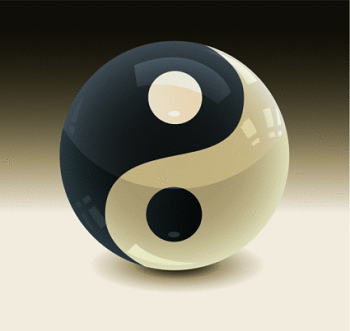Dec 24, 2025
Dec 24, 2025
 A symbol, in its true sense, is not a conventional sign; it is the finite expression of the infinite, the only means to evoke and convey realities, which cannot be expressed directly. These realities are conceived as concepts first. However, a concept cannot be formulated without appropriate symbolism. A concept cannot be authenticated without corresponding symbol. Secondly, nearer a symbol to the concept, in quality and quantity, higher is its acceptance as the ideal. This leads to a peculiar situation: the highest symbol now may be confused with the concept (principle) itself! Thus, Christ does not remain a symbol of God; He becomes the God.
A symbol, in its true sense, is not a conventional sign; it is the finite expression of the infinite, the only means to evoke and convey realities, which cannot be expressed directly. These realities are conceived as concepts first. However, a concept cannot be formulated without appropriate symbolism. A concept cannot be authenticated without corresponding symbol. Secondly, nearer a symbol to the concept, in quality and quantity, higher is its acceptance as the ideal. This leads to a peculiar situation: the highest symbol now may be confused with the concept (principle) itself! Thus, Christ does not remain a symbol of God; He becomes the God.
The symbol is often incomplete representative of a concept; the corollary that a concept can be represented by more than one symbol thus holds true. Thus, a higher concept like Absolute Consciousness can be represented by many symbols. Jesus Christ, Sri Krishna, Lord Buddha, or Ramakrishna (and many others) become God with forms as well as Truth representing Formless Reality.
Language and words are approximate symbols for thoughts, imagination, and all other functions of mind. No language can fully capture the thought in its totality.
Let us take an example of telegram. The words may be, "Daughter born. Mother and the baby fine." Or, "Mr. so and so died in accident. Come soon." Both the telegrams are symbols of state of minds of the persons, but cannot depict the total feelings. The state of mind and emotions and its effects on a person cannot be fully told in any one language. For, the reaction of the telegram would be different for a friend, close relative, or a stranger.
Therefore, development and richness of language leads to the variable symbolism for the same concept. The same applies to different media conveying the concept. Thus image worship and crude form of rituals are seen depending upon the growth (or lack of it) in various groups of people. It is, therefore, prudent not to look down upon their mode of symbolic representation of a concept that may differ from symbolism of highly evolved race or a culture, but is in fact related with the same concept.
While a concept evolves as a result of abstraction and generalization based on the experiences of humanity in different time and place, the symbol tries to represent the concept in its one particular aspect. Symbol is crude or gross, and is unable to, or does not find it necessary to, express totality of the abstracted concept that it represents. This is the cause of lag between the concept and a symbol.
In case of human beings, without the symbol of language and words the concept can never be transmitted and translated in appropriate behavior and reactions. Symbol is necessary for the approximate comprehension and propagation of a concept for the benefit and growth of human intellect or wisdom. It enhances the power of abstraction based on higher and higher cognition. Gestures, written and spoken speech, and words are familiar symbols. So also whole of the Nature: plants, animals, human beings, sky, mountains, oceans, etc.
At times, even the concept cannot be formulated about the highest abstraction or generalization of a truth or reality. This is true with regards to the highest abstraction of Transcendental Reality. Not only the words fail but also the mind fails to grasp and express the abstraction. With it language, imagination, thought, and ideas also fail. Then such a concept is "downsized" to lower symbols of God, with or without form or attributes. The symbol of God itself now becomes the concept of highest abstraction and generalization! Various sections of humanity, race, clan, associations, nations, and people try to use symbol of their choice to actualize the concept of God; Jesus for some, Buddha for others, Om for a few, and so on. And in the same stream, if aboriginal in India, Australia, and Africa continue to see God in trees and mountains, the dead and the ghosts, we should have no hesitation in accepting such symbolism!
History of art and literature, science and religion is the history of bridging this gap between the concept and symbols to its closest possible approximation. Thus great individuals, books, literature, music, work of art, etc. are recognized as or become the best possible symbols of the concept. In science they take the form of successive enrichment in scientific laws and theorems, while in religion they progress from lower knowledge to higher knowledge - apara vidya to para vidya. The journey continues from lower form of worship to higher form, from grosser to subtle, from forms with attributes to formless without attributes!
27-Apr-2001
More by : Dr. C.S. Shah